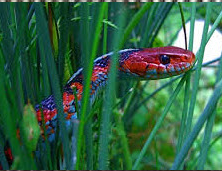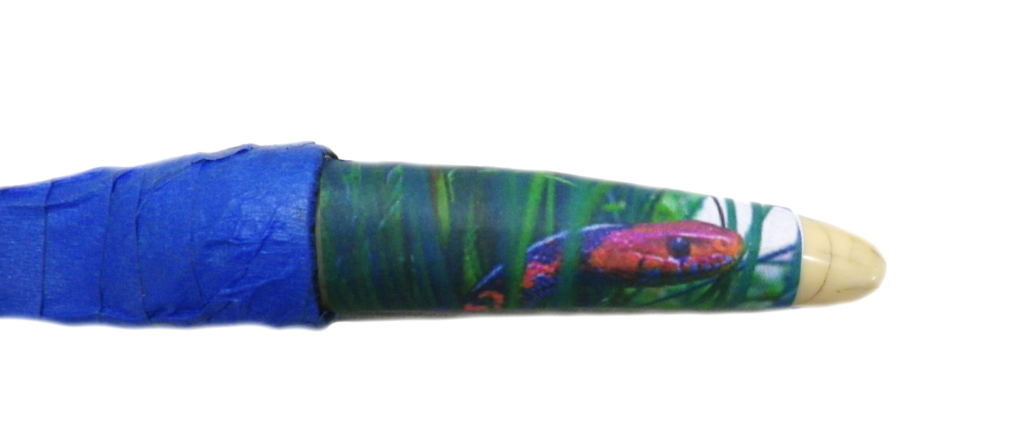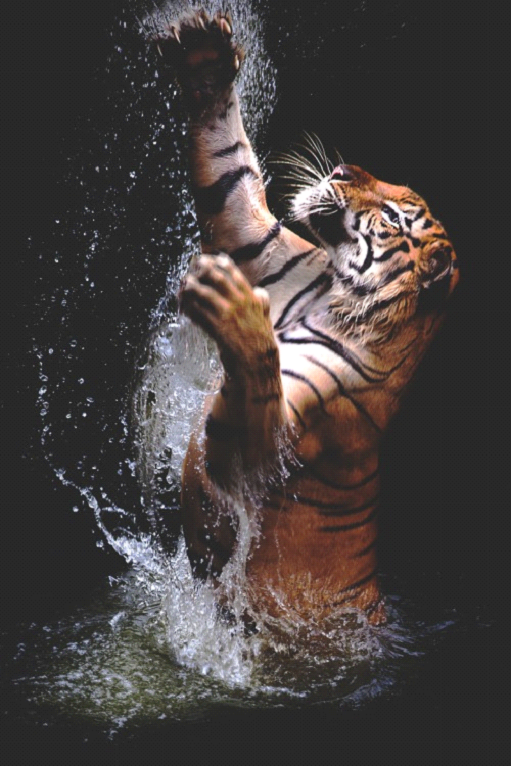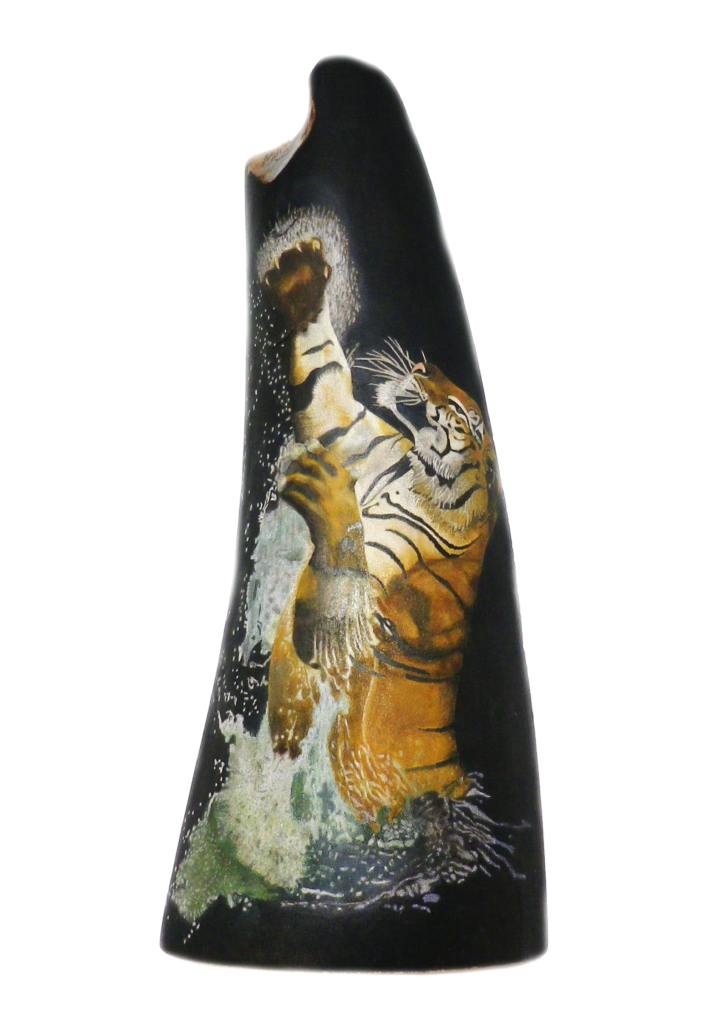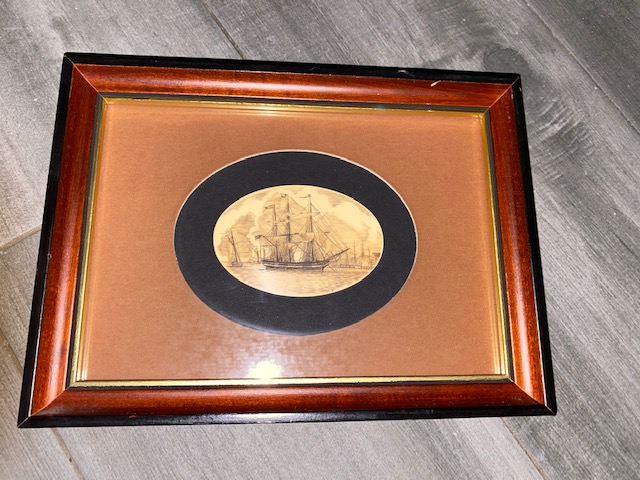
From Sarah: ” I recently acquired 2 scrimshaw pieces and I was hoping you could help me ID the artist. Also, I’m not sure what material it is either.”
The oval is 3″x2″ (76.2mmx50.4mm) She also attempted the hot pin test with no definite results. Aquired in New Jersey, it’s a nice looking piece with a lot of detail and the initials of the artist – something you don’t usually find on mass produced items. Sadly it’s difficult to make out the exact initials.
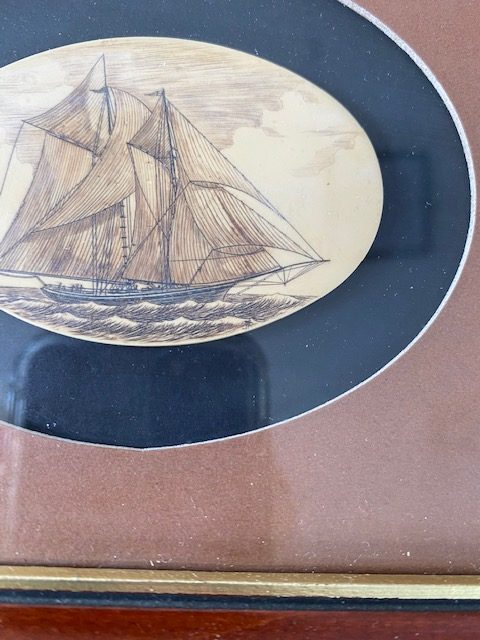
The typical reproductions are larger ovals and often in portrait mode, usually measuring approximately 4″x5″ (101.6mmx126.4mm) and often have the name of the ship on a banner, many times mounted in an oval frame. It looks like there is a small amount of color as well, though this may be an affect of the camera.
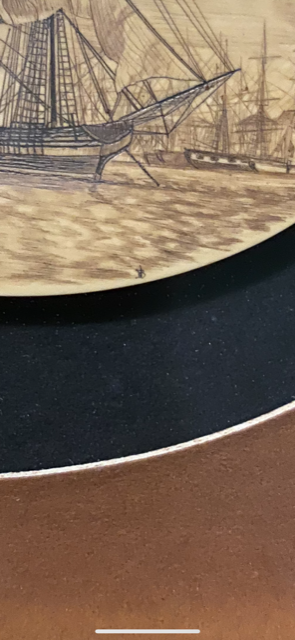
Even on a close-up, the initials are barely discernable. The images came in at 640x480px, so magnifying hasn’t helped.
Does anyone recognize this artist? Please add your comments below!
Solved! Thanks to “The Scrimshaw Collector’s Guild“, especially Bill Feeney and Jonathan Laubin. Now that I look at it, I can see “SB” more clearly. In case anyone is interested, as of 7/15/2020 there is another one for sale on Etsy.
